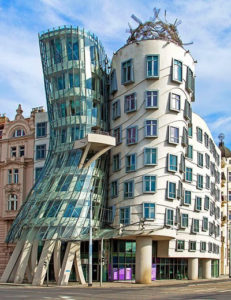 When an artist or inventor creates something truly original, we tend to envision it as a thunderbolt, a flash of genius striking from above. Imagine Picasso painting La Demoiselles D’Avignon, the first Cubist work, with its startling multiple angles and unprecedented gorgeous weirdness. How did that happen?
When an artist or inventor creates something truly original, we tend to envision it as a thunderbolt, a flash of genius striking from above. Imagine Picasso painting La Demoiselles D’Avignon, the first Cubist work, with its startling multiple angles and unprecedented gorgeous weirdness. How did that happen?
That’s one of the questions that Time magazine’s special issue The Science of Creativity, edited by my friend (and Gotham student!) Richard Jerome, tries to answer. It’s a fascinating read, full of insights into how and why humans make art, tell stories, and invent things.
In “Under the Hood of Creativity,” writers Anthony Brandt and David Eagleman explore what happens in the brains of people who invent something humanity has never seen before—like Picasso, or geneticist Randy Lewis, who spliced spider DNA into a goat. (Really. That’s not a Marvel comic.)
“When an artist breaks the mold to create something [novel], it is the result of basic software running in the brain,” Brandt and Eagleman write. “The brain doesn’t passively take things in like a recorder; instead, it constantly works over the sensory data it receives.”
According to Brandt and Eagleman, the brain works external data into something new in three basic ways: it can bend it, break it, or blend it.
In bending, the brain manipulates data into a new shape. It’s architect Frank Gehry looking at the flat faces of buildings and finding a way to make them undulate.
In breaking, the brain takes information, breaks it into pieces, then reassembles it into something new. Picasso looked at human faces and then sectioned them into triangles, eyes stacked one atop the other.
In blending, the brain combines familiar ingredients in new recipes. At Apple, Steve Jobs synthesized existing code, hardware, and software and then stuck it in your pocket.
Cautionary note: I’m not saying that bending, breaking, and blending are all that matter when writing. We’ve all read something that tried to be fabulous, famous, or fresh, for the sake of being fabulous, famous, or fresh, and the results were usually disastrous.
Instead, use bending, breaking, and blending to wrest your own story out of your head. Plot giving you a hard time? Try breaking it into pieces. Character feeling flat and one-dimensional? Hoover up details about people you know, people in the news, people on the subway—and blend them until you create someone you may never have imagined before.
And don’t limit yourself to using these ideas only in your writing. As Richard, the editor, said, creativity “is fundamental to being human—we use creativity countless ways in the course of our daily lives—even to do something so obviously mundane as balancing our checkbooks.”

Kelly Caldwell
Dean of Faculty


